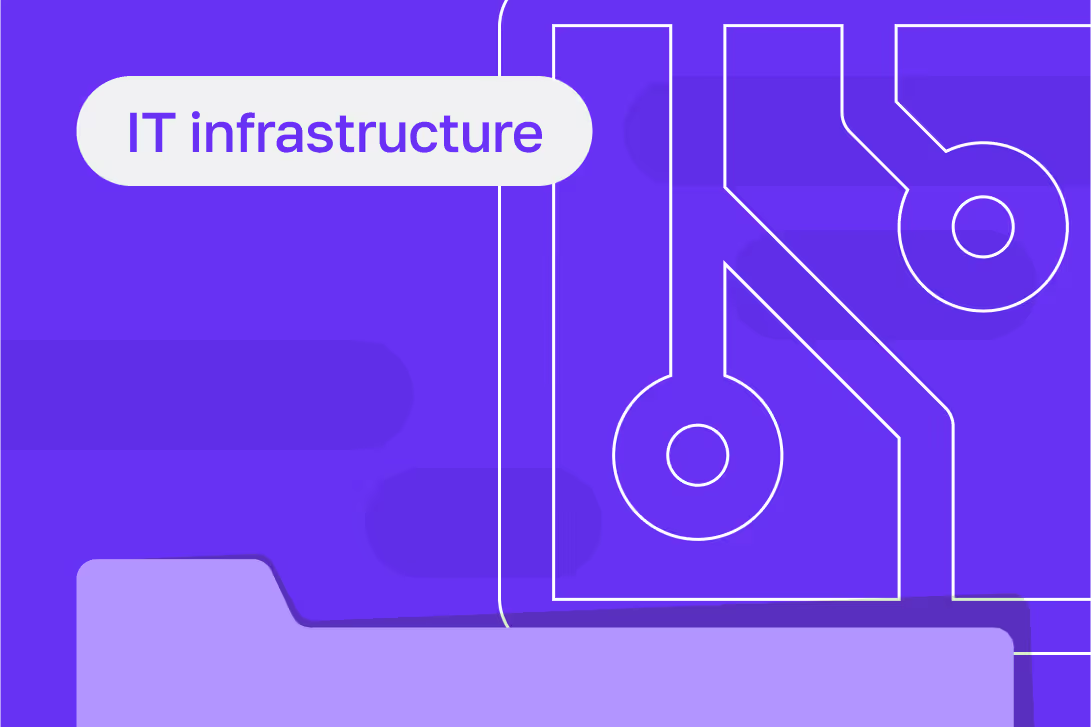What Does IT Support Mean in 2025?

.avif)
Listen to this blog as a podcast

.png)
Once upon a time, IT support meant fixing the printer, resetting a password, or trying to keep the email server from crashing.
That world isn’t gone — but it’s upgraded. Fast. Today, IT support is about way more than troubleshooting. It’s operational, strategic, and deeply embedded in how modern businesses run.
So, what does IT support mean now?
This guide breaks it down: what’s changed, where it’s headed, and how Fixify helps modern teams get the job done with less friction.
The old definition: Fixing problems, fast
Classic IT support was all about speed: someone had a problem, opened a ticket, and crossed their fingers for a quick fix.
That reactive model still has a place—fast resolution is table stakes. But for teams dealing with thousands of tickets, outdated tools, or disconnected systems, it’s not enough.
The usual pain points?
- Tools that don’t talk to each other
- Repetitive tickets clogging the queue
- Little to no visibility into performance
If you’re looking for a refresher on how traditional support works, this beginner’s guide does a solid job laying out the fundamentals.
What IT support means today
Fast forward to 2025, and IT support is no longer just about fixing broken stuff—it’s about keeping people productive and systems secure.
That includes:
- Managing onboarding and offboarding workflows
- Granting and revoking access across a sea of apps
- Monitoring usage and flagging security risks
- Handling approvals, automations, and internal tools
Support today is an operational partner. It’s plugged into HR, finance, security, and every employee’s day-to-day.
As teams grow, become hybrid, or adopt more SaaS tools, the scope of support from today’s IT departments naturally expands. And with that growth comes the need for better workflows, smarter tools, and less manual effort.
The role of automation and AI in modern support
Here’s the shift: IT support isn’t going away — it’s evolving. Repetitive tasks like password resets or software provisioning? They’re easy to automate.
But nuanced, judgment-based issues? Those still need people.
Modern tools like Fixify utilize automation and AI to filter out the noise, so your team can focus.
That includes:
- Automated triage and categorization
- Intelligent routing to the right person or system
- Self-service options for frequent requests
This isn’t about bots taking over. It’s about giving your analysts room to breathe — and to be more strategic.
For more on what this shift means for the help desk, check out our post on modern help desk software.
Visibility and metrics: What leaders actually need
As support becomes more strategic, IT leaders want more than closed ticket counts.
They want to understand:
- What kinds of requests are eating up time
- How long different ticket types take to resolve
- Where bottlenecks are forming
- How users actually feel about the experience
Most legacy help desks can’t answer those questions well. But modern IT support platforms should.
Fixify offers real-time dashboards that give you a clear line of sight into volume, sentiment, time-to-resolution, and trends across your support org. You get data you can act on—not just data that looks good in a slide deck.
What Fixify brings to modern IT support
Fixify helps IT teams escape reactive mode and start working smarter.
We work on 75% of Tier 1 and Tier 2 tickets end-to-end using a hybrid approach that blends automation with real human analysts. That means your internal team can finally focus on higher-impact projects.
Our 4-step model makes it easy to start:
- Understand: We analyze your ticket data to show where time goes.
- Eliminate: We remove the tickets that don’t need to exist.
- Improve: We refine your workflows and plug into your tools.
- Automate: We use AI to handle high-volume tasks with logic and context.
No rip-and-replace. No multi-month setup. Just a faster, cleaner way to deliver support.
If you’re curious about how our model differs from traditional help desks, this deep dive lays out our approach.
What’s next for IT support?
The future of IT support isn’t more tickets — it’s fewer.
Not because people stop needing help, but because the help is built in. Automated. Streamlined. Predictable.
We’re moving toward:
- Smarter self-service
- More proactive insights
- Better integration between tools and teams
- A tighter link between IT and business outcomes
For a glimpse into where this is headed, Digacore’s 2025 insights hits on many of these same trends — and we’re already seeing them play out with Fixify customers.
If your team is overwhelmed, reactive, or just outgrowing your current setup, Fixify was built for you.
Want to see how it could work for your team?
Request a demo and we’ll show you we’ll show you what modern IT support looks like.
Related articles

What is IT infrastructure management? A modern take


Outsourced IT help desk services: What we hear seasoned IT leaders wish they knew sooner


Help desk outsourcing companies: Why your IT team should (actually) care

Stay in the loop

Sign up to get notified about our latest news and blogs
.png)